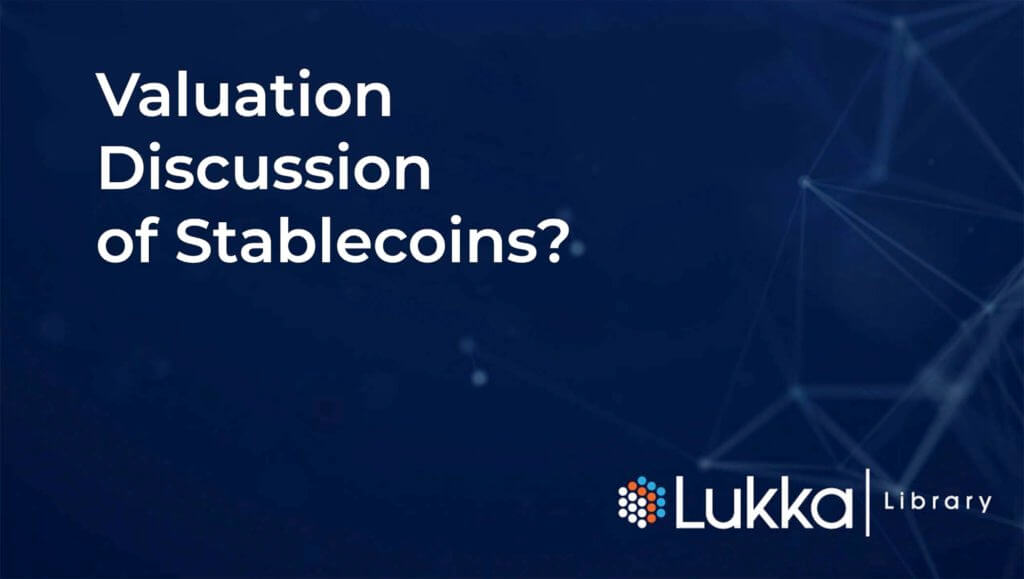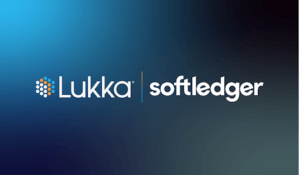Author: Dr. Gerard (Rod) Brennan; Advisor for Lukka & Adjunct Professor Teaching Advanced Audit and Information Technology in the Rutgers Professional Accounting MBA Program; Rutgers Business School; Newark, New Jersey.
The statements in this document reflect guidance issued as of March 26, 2020.
Current State/Guidance of Stablecoins:
As of the date of this writing, there remains very little codified or non-authoritative guidance from US or international accounting regulators/standard setters addressing the classification and accounting treatment of cryptocurrencies/crypto assets. There is, however, existing guidance that can be carefully applied to the economic phenomenon of cryptocurrencies to provide relevant non-authoritative guidance for practitioners transacting in cryptocurrencies. One important area of focus is the valuation of stablecoins.
The stablecoin is a rapidly emerging class of cryptocurrencies addressing some of the volatility concerns burdening the adoption of many of the leading cryptocurrencies. Stablecoins are cryptocurrencies that are pegged to, or reserved, by a fiat currency or other assets (e.g., gold or another cryptocurrency). Alternatively, a stablecoin network may algorithmically govern the coin supply and demand. There are many actively traded stablecoins that should in most instances be marked to market to establish appropriate valuation/pricing. There are many stablecoins in circulation today, some of the more common coins include Tether (USDT), Gemini Dollar (GUSD), and the Paxos Standard Token (PAX). Tether (USDT) which is reserved by the U.S. dollar was the first prominent stablecoin in circulation and has one of the highest daily trading volumes of any cryptocurrency, but it has been plagued by compliance questions/concerns over the past several years. The GUSD and PAX are the first-ever regulated stablecoins, approved by the New York Department of Financial Services (NYDFS) and backed 1:1 by the U.S. dollar (in FDIC-insured U.S. bank accounts). Gemini’s and Paxos’ USD balances are independently audited monthly to assure the number of circulated tokens equals the number of reserve dollars.
Stablecoins, especially those reserved 1:1 with a stable fiat currency, such as the U.S. dollar, offer market participants an important sense of stability over decentralization in the cryptocurrency ecosystem. Well-designed stablecoins can address participants concerns about price volatility and related risks. Many individuals and entities remain on the digital asset sidelines because of volatility/stability concerns with leading cryptocurrencies. Stablecoins hold the promise of reducing risk and broadening the scope of the cryptocurrency ecosystem to include more investment opportunities and financial services including expanding commerce, futures/derivative trading, crypto lending, etc., – empowering more participants and capitalization in the space.
Valuing Stablecoins:
As indicated above, there is currently no codified guidance from the FASB or IASB specific to the appropriate valuation of stablecoins or cryptocurrencies in general, but practice and precedent accounting offer some clear applications of existing guidance to this new economic phenomenon. Aligning with existing standards, there are several possible accounting treatments for measuring and reporting cryptocurrencies: historical cost, fair value through profit and loss, and fair value through other comprehensive income. The proper accounting treatment should be determined consistent with existing standards for similar assets. This should be done by considering managements’ intention for holding the cryptocurrency, including holding it on an individual or entities own behalf, as a means of payment, for profit/trading, as a qualified investment, or as an item produced (e.g., Mining), etc. Under both U.S.-GAAP and IFRS there are valuation models for cost and fair value (FV) approaches depending on the class and status of the entity or owner.
When considering valuation or revaluation of stablecoins the question arises, should a stablecoin be valued at its current market value or at its pegged or reserved currency value? Regardless if a cost or fair value (FV) approach is appropriate per existing guidance for similar assets, or if a valuation is needed for an acquisition, disposal, or an impairment analysis, the determination of a current value is often required. Some suggest the stablecoin should be valued at its pegged or reserved currencies’ current value while others would recommend marking an actively traded stablecoin to market. Consider that an actively traded Tether or Paxos stablecoin reserved 1:1 to the U.S. dollar may show price variations on different exchanges around the world. This may be due to market-induced premiums or discounts related to variations in transaction fees, volume, supply/demand, jurisdictions, market risks, etc. While theoretically the reserved stablecoin always has one U.S. Dollar in reserve supporting its value, and this may be established by regular independent audits, there will always be price variations in active market trading.
Stablecoins reserved against fiat currencies are often “minted” (produced) or “burned” (destroyed) based on demand and to assure the full reserve is maintained at all times. While the issuance or redemption of a fiat reserved stablecoin will generally be at the current reserve currency value, the valuation of the stablecoin for tax or financial reporting should be marked to the “principal market” at the current or “last observable price” – per the fair value accounting principles under US GAAP (ASC 820) and IFRS (IFRS 13). These established fair value standards provide US and non-US entities with specific guidance on how to mark to market (i.e. value or price) certain types of actively traded assets similar to stablecoins. US and International accounting guidance is largely converged, defining the guidelines, inputs, and required disclosures for fair value measurements. These specific standards do not establish requirements for when fair value is required or permitted, but only how fair value should be measured once established as an appropriate valuation method. Actively traded stablecoins or any crypto assets lend themselves to the application of the above FV accounting guidance because they generally represent large volumes of observable transactions/prices in principal crypto markets.
Conclusion:
Stablecoins, reserved against established fiat currencies, are poised to become stalwart contributors to the rapidly emerging cryptocurrency/crypto-asset ecosystem, by addressing participants’ concerns about price volatility and related risks. While no specific codified guidance exists for stablecoin valuations, the current FASB & IASB guidance can be carefully applied to stablecoins and aligned with (non-binding) IRS tax guidance and other applicable guidance provided by other standard setters/regulators to determine an appropriate valuation/price. Actively traded stablecoins should in most instances be marked to market to establish appropriate valuation/pricing.
The author is writing on his own behalf and none of the statements should be attributed to Lukka or The Rutgers Business School.
The statements in this document should not be treated as legal, tax, or accounting advice. The document is intended to provide general information only. If a person would like such advice, they should seek professional advice with regard to their specific facts.




